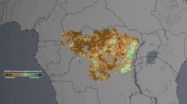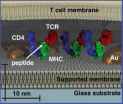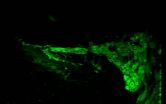(Press-News.org) A new analysis of NASA satellite data shows Africa's Congo rainforest, the second-largest tropical rainforest in the world, has undergone a large-scale decline in greenness over the past decade.
The study, led by Liming Zhou of University at Albany, State University of New York, shows between 2000 and 2012 the decline affected an increasing amount of forest area and intensified. The research, published Wednesday in Nature, is one of the most comprehensive observational studies to explore the effects of long-term drought on the Congo rainforest using several independent satellite sensors.
"It's important to understand these changes because most climate models predict tropical forests may be under stress due to increasing severe water shortages in a warmer and drier 21st century climate," Zhou said.
Scientists use the satellite-derived "greenness" of forest regions as one indicator of a forest's health. While this study looks specifically at the impact of a persistent drought in the Congo region since 2000, researchers say that a continued drying trend might alter the composition and structure of the Congo rainforest, affecting its biodiversity and carbon storage.
Previous research used satellite-based measurements of vegetation greenness to investigate changes in the Amazon rainforest, notably the effects of severe short-term droughts in 2005 and 2010. Until now, little attention has been paid to African rainforests, where ground measurements are even sparser than in the Amazon and where droughts are less severe but last longer.
To clarify the impact of long-term drought on the Congo rainforest, Zhou and colleagues set out to see whether they could detect a trend in a satellite measure of vegetation greenness called the Enhanced Vegetation Index. This measure is developed from data produced by the Moderate Resolution Imaging Spectroradiometer (MODIS) instrument on NASA's Terra satellite. The scientists focused their analysis on intact, forested regions in the Congo basin during the months of April, May and June each year – the first of the area's two peak rainy and growing seasons each year.
The study found a gradually decreasing trend in Congo rainforest greenness, sometimes referred to as "browning," suggesting a slow adjustment to the long-term drying trend. This is in contrast to the more immediate response seen in the Amazon, such as large-scale tree mortality, brought about by more episodic drought events.
The browning of the forest canopy is consistent with observed decreases in the amount of water available to plants, whether that is in the form of rainfall, water stored in the ground, water in near-surface soils, or water within the vegetation.
These changes in available water were detected in part with NASA satellites including the NASA/JAXA Tropical Rainfall Measuring Mission, NASA's Quick Scatterometer (QuikScat), and NASA's Gravity Recovery and Climate Experiment, a joint mission with the German Aerospace Center.
"Combining measurements from different sensors has given us more confidence in the results of the MODIS data and provided us with insights into the environmental and physiological mechanisms of the browning observed by the MODIS data," said co-author Sassan Saatchi of NASA's Jet Propulsion Laboratory (JPL) in Pasadena, Calif.
Climate factors known to affect vegetation growth were also in line with the observed browning. Land surface temperatures, for example, were observed to increase over most of the study area. Decreased cloudiness allowed more solar radiation to reach the plants, which typically promotes photosynthesis, but in this case it likely posed an extra stress on the plants from the resulting depletion of soil moisture.
"Forests of the Congo basin are known to be resilient to moderate climate change because they have been exposed to dry conditions in the past few hundred years," Saatchi said. "However, the recent climate anomalies as a result of climate change and warming of the Atlantic Ocean have created severe droughts in the tropics, causing major impacts on forests."
How the changes affect individual plant species in the area remains to be seen. For example, drier conditions may favor deciduous trees at the expense of evergreen trees.
"Our assessment is a step toward an improved understanding of how African rainforests respond to increasing drought," Zhou said. "We need to consider the complex range of processes affecting different tropical rainforest species before we can fully assess the future resilience of tropical forests."
INFORMATION:
The other authors for this research include Yuhong Tian at I.M. Systems Group, Inc. at the Center for Satellite Applications and Research, the science arm of National Oceanic and Atmospheric Administration's Satellite and Information Service; Ranga Myneni at Boston University; Philippe Ciais at Laboratoire des Sciences du Climat et de l'Environnement, Gif sur Yvette Cedex, France; Yi Y. Liu at University of New South Wales, Australia; Shilong Piao at Peking University, China; Haishan Chen at Nanjing University of Information Science and Technology, China; Eric Vermote of NASA's Goddard Space Flight Center, Greenbelt, Md.; and Conghe Song and Taehee Hwang at University of North Carolina at Chapel Hill.
NASA monitors Earth's vital signs from land, air and space with a fleet of satellites and ambitious airborne and ground-based observation campaigns. NASA develops new ways to observe and study Earth's interconnected natural systems with long-term data records and computer analysis tools to better see how our planet is changing. The agency shares this unique knowledge with the global community and works with institutions in the United States and around the world that contribute to understanding and protecting our home planet.
For more information about NASA's Earth science activities in 2014, visit:
http://www.nasa.gov/earthrightnow
For more information about NASA programs, visit:
http://www.nasa.gov
NASA satellites show drought may take toll on Congo rainforest
2014-04-23
ELSE PRESS RELEASES FROM THIS DATE:
WSU innovation improves drowsy driver detection
2014-04-23
SPOKANE, Wash.—Researchers at Washington State University Spokane have developed a new way to detect when drivers are about to nod off behind the wheel.
Their recently patented technology is based on steering wheel movements—which are more variable in drowsy drivers—and offers an affordable and more reliable alternative to currently available video-based driver drowsiness detection systems.
Van Dongen"Video-based systems that use cameras to detect when a car is drifting out of its lane are cumbersome and expensive," said Hans Van Dongen, research professor at the WSU ...
Study: Iron consumption can increase risk for heart disease
2014-04-23
A new study from the Indiana University School of Public Health-Bloomington has bolstered the link between red meat consumption and heart disease by finding a strong association between heme iron, found only in meat, and potentially deadly coronary heart disease.
The study found that heme iron consumption increased the risk for coronary heart disease by 57 percent, while no association was found between nonheme iron, which is in plant and other non-meat sources, and coronary heart disease.
The study was published online ahead of print in the Journal of Nutrition. Along ...
First size-based chromatography technique for the study of living cells
2014-04-23
Using nanodot technology, Berkeley Lab researchers have demonstrated the first size-based form of chromatography that can be used to study the membranes of living cells. This unique physical approach to probing cellular membrane structures can reveal information critical to whether a cell lives or dies, remains normal or turns cancerous, that can't be obtained through conventional microscopy.
"We've developed membrane-embedded nanodot array platforms that provide a physical means to both probe and manipulate membrane assemblies, including signaling clusters, while they ...
Hearing quality restored with bionic ear technology used for gene therapy
2014-04-23
VIDEO:
This shows regenerated auditory nerves, after gene therapy.
Click here for more information.
Researchers at UNSW Australia have for the first time used electrical pulses delivered from a cochlear implant to deliver gene therapy, thereby successfully regrowing auditory nerves.
The research also heralds a possible new way of treating a range of neurological disorders, including Parkinson's disease, and psychiatric conditions such as depression through this novel way of delivering ...
Study shows aspirin can reduce colorectal cancer risks for those with specific gene
2014-04-23
The humble aspirin may have just added another beneficial effect beyond its ability to ameliorate headaches and reduce the risk of heart attacks: lowering colon cancer risk among people with high levels of a specific type of gene.
The extraordinary finding comes from a multi-institutional team that analyzed data and other material from two long-term studies involving nearly 128,000 participants. The researchers found that individuals whose colons have high levels of a specific gene product — 15-hydroxyprostaglandin dehydrogenase (15-PGDH) RNA — dramatically reduce their ...
Atomic switcheroo explains origins of thin-film solar cell mystery
2014-04-23
OAK RIDGE, Tenn., April 23, 2014 — Treating cadmium-telluride (CdTe) solar cell materials with cadmium-chloride improves their efficiency, but researchers have not fully understood why. Now, an atomic-scale examination of the thin-film solar cells led by the Department of Energy's Oak Ridge National Laboratory has answered this decades-long debate about the materials' photovoltaic efficiency increase after treatment.
A research team from ORNL, the University of Toledo and DOE's National Renewable Energy Laboratory used electron microscopy and computational simulations ...
Economics = MC2 -- A portrait of the modern physics startup
2014-04-23
WASHINGTON D.C., April 23, 2014 -- For much of the 20th century, many of the technological innovations that drove U.S. economic growth emerged from "idea factories" housed within large companies -- research units like Bell Labs or Xerox PARC that developed everything from the transistor to the computer mouse.
In recent decades, however, many large high-tech companies have eliminated in-house research programs, turning instead to startup companies as their primary source of breakthrough innovations.
"Small startups have replaced corporate research centers as the drivers ...
Pollutants from coal-burning stoves strongly associated with miscarriages in Mongolia
2014-04-23
Burning coal for domestic heating may contribute to early fetal death according to a new study by experts from The Saban Research Institute of Children's Hospital Los Angeles and Ulaanbaatar, Mongolia – the coldest capital city in the world.
In a paper published today in the journal BMC Pregnancy and Childbirth, researchers report
"alarmingly strong statistical correlations" between seasonal ambient air pollutants and pregnancy loss in Ulaanbaatar (UB), Mongolia.
UB has one of the highest levels of air pollution of all world capitals, with sulfide dioxide and particulate ...
Superconducting qubit array points the way to quantum computers
2014-04-23
A fully functional quantum computer is one of the holy grails of physics. Unlike conventional computers, the quantum version uses qubits (quantum bits), which make direct use of the multiple states of quantum phenomena. When realized, a quantum computer will be millions of times more powerful at certain computations than today's supercomputers.
A group of UC Santa Barbara physicists has moved one step closer to making a quantum computer a reality by demonstrating a new level of reliability in a five-qubit array. Their findings appear Thursday in the journal Nature.
Quantum ...
Cyber buddy is better than 'no buddy'
2014-04-23
A Michigan State University researcher is looking to give exercise enthusiasts the extra nudge they need during a workout, and her latest research shows that a cyber buddy can help.
The study, which appears in the Games for Health Journal, is the first to indicate that although a human partner is still a better motivator during exercise, a software-generated partner also can be effective.
"We wanted to demonstrate that something that isn't real can still motivate people to give greater effort while exercising than if they had to do it by themselves," said Deborah Feltz, ...








